The Power of Public Art in Entertainment Districts
Enhancing Experience, Connection, and Growth
Mixed-use and entertainment districts have become central to the public realm, thanks in large part to post-pandemic preferences driving the “experience economy.” People want authentic, memorable experiences that also offer the convenience and connection the pandemic deprived them of. Hence the rise of mixed-use and entertainment districts, where easy access to retail, restaurants, green space, and other urban amenities help foster meaningful social interactions. Such environments are also growing in anticipation of major events like the 2026 World Cup and the 2028 Olympic Games, as well as the redevelopment of major sports arenas and concert venues.
As we plan for and reimagine these environments, there’s one element that cannot be overlooked for its ability to enhance the human experience while producing economic and social benefits: public art.
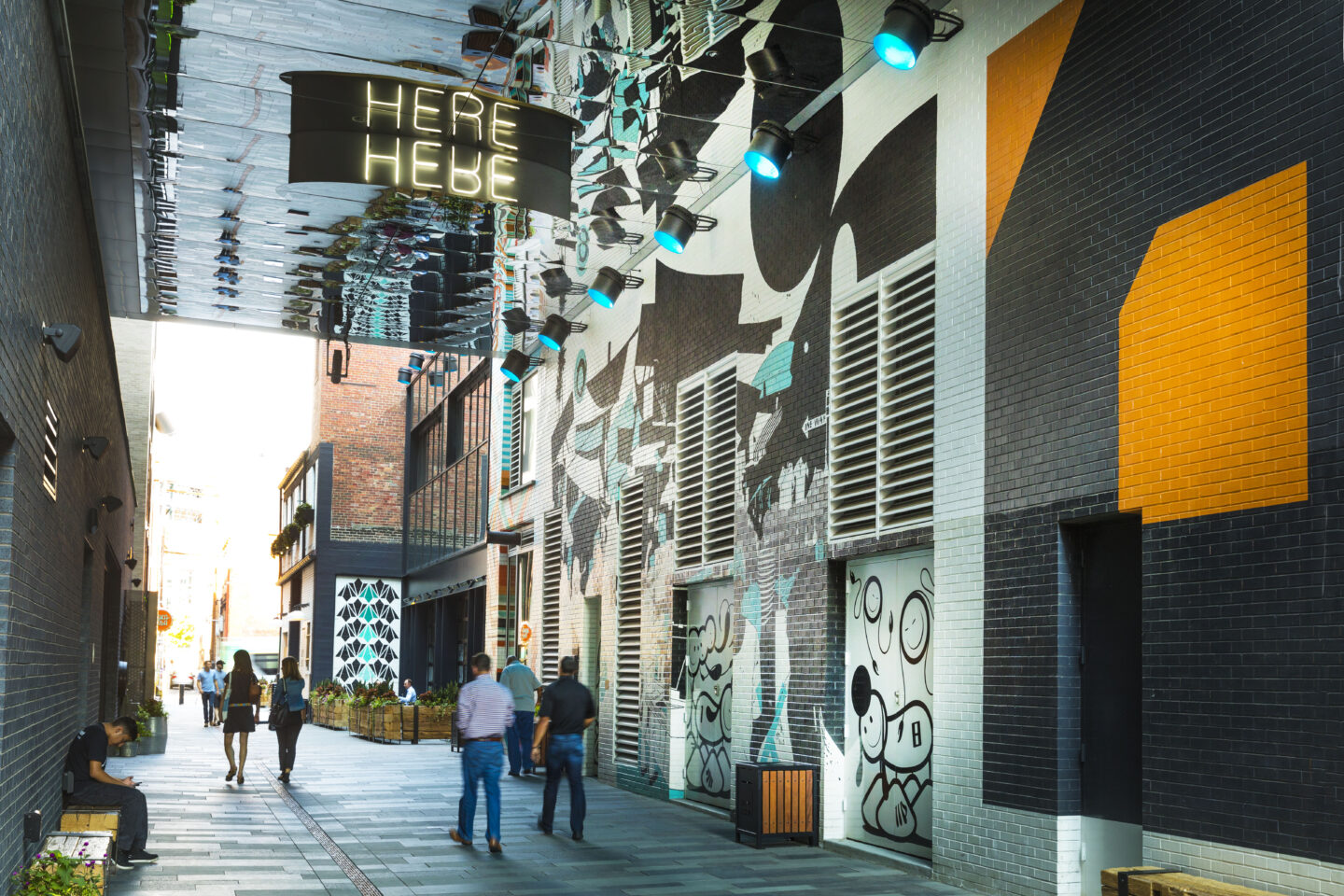
Influencing Human Behavior and Visitor Experience
For many entertainment districts, where size and scope can feel overwhelming, strategically placed artwork can influence how humans move through and interact with a space. Large sculptures or distinct murals serve as landmarks and wayfinding tools, helping visitors navigate a space while enhancing its aesthetic appeal.
Consider Denver’s award-winning Dairy Block, a mixed-use micro-district with shops, restaurants, a hotel, offices, and an activated alleyway used for community events of all kinds. Visitors are welcomed to the alley by a landmark installation by local duo George Peters and Melanie Walker of Airworks Studio. This 30-foot tall “Spilt Milk” sculpture references the site’s dairy history with a large milk splash that “pours” down the side of the building and immediately beckons passersby into the alley. Once inside, murals and mixed-media installations continue beckoning visitors into nearby retail and F&B establishments, increasing time and money spent within the micro-district.
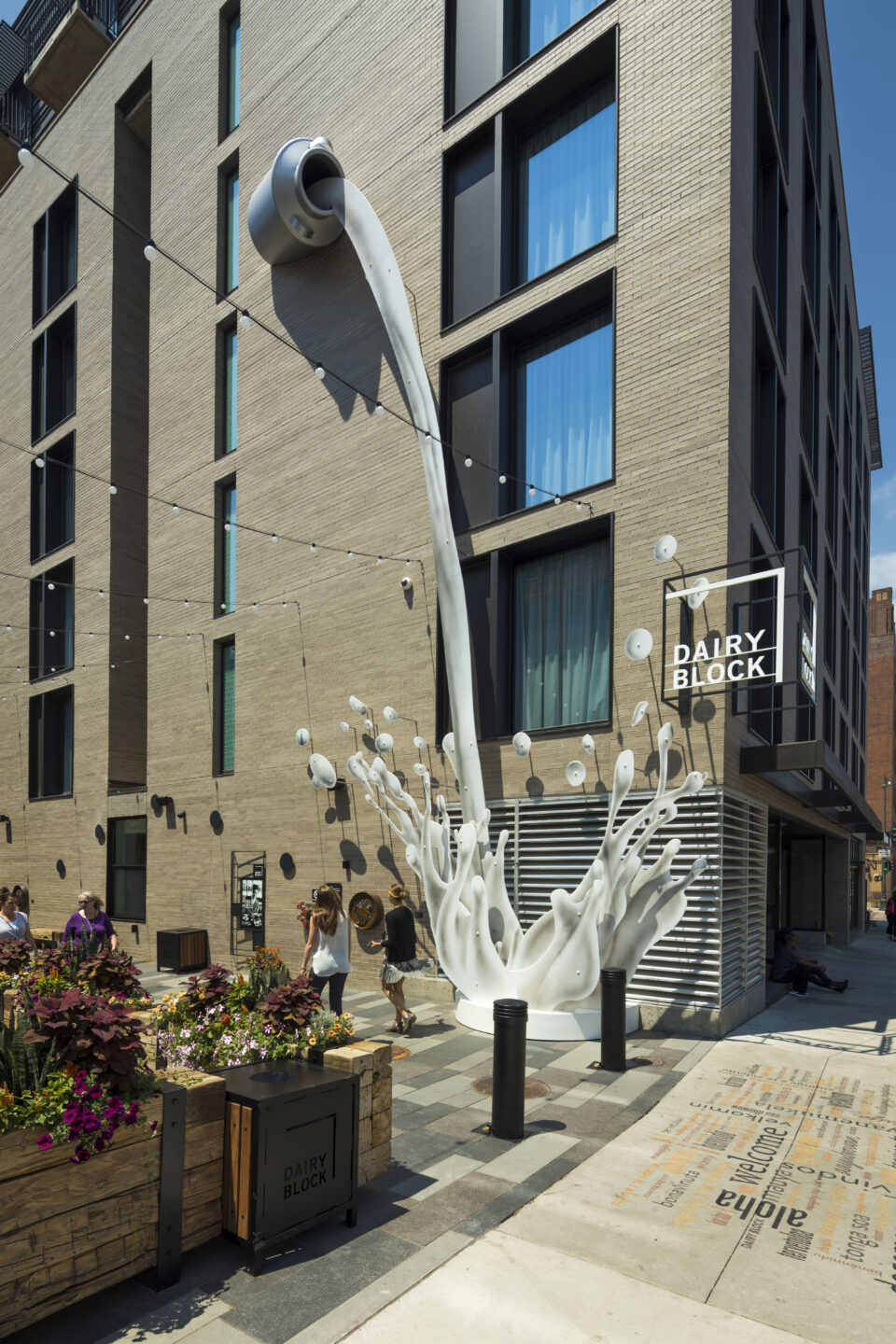
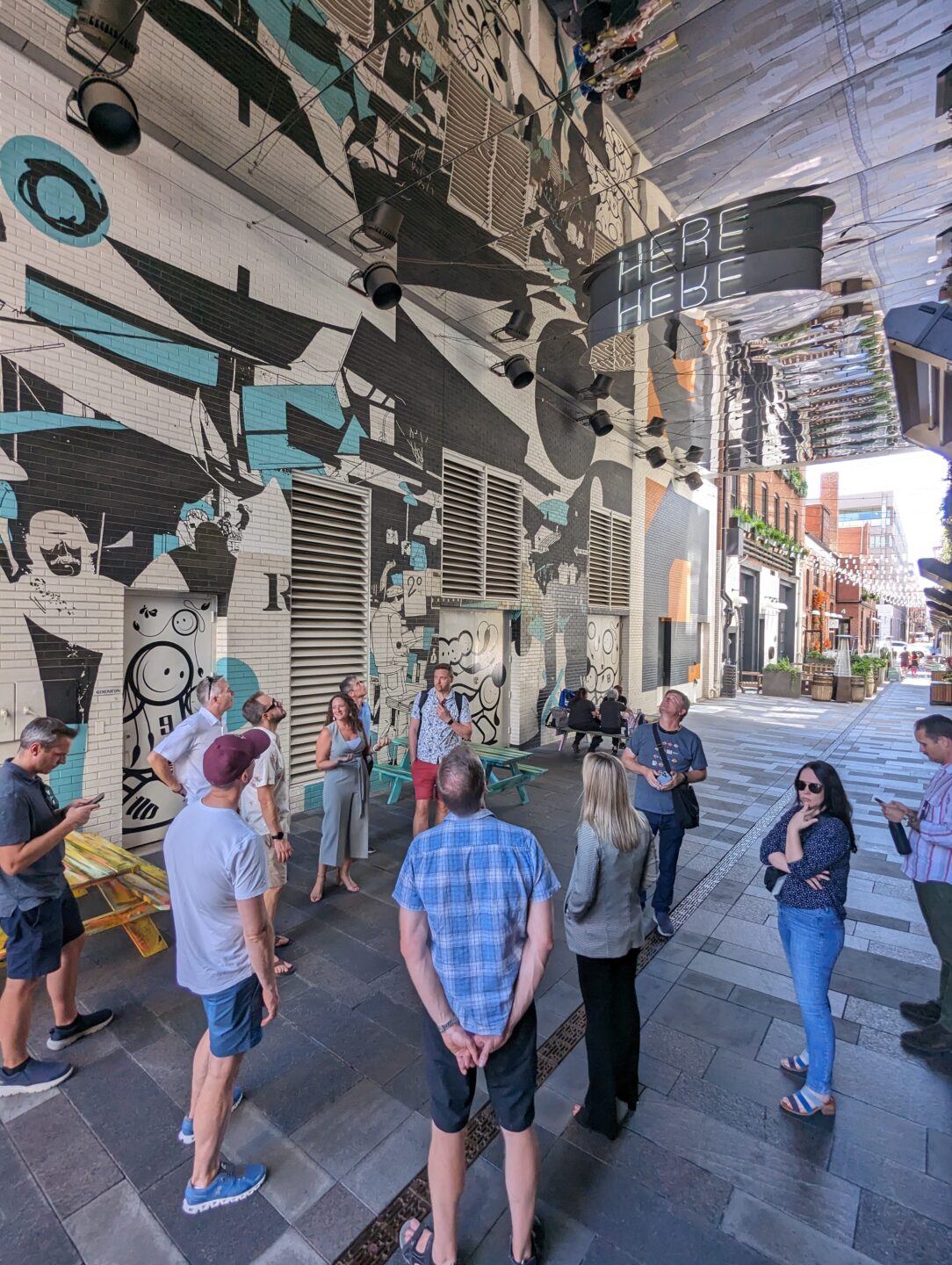
At the newest NBA arena in Inglewood, California, interior and exterior artwork are an important part of the social experience, promoting innovation and impact. Mixed-media exterior installations serve as meet-up spots, wayfinding elements, and social media backdrops, while our team’s interior curation promotes further curiosity and awe.
Beyond providing visual clues to orient users to a space, projects like these demonstrate how art can encourage people to linger longer, engage more intently, and altogether elevate the visitor experience.
Driving Economic Growth and Community Investment
Beyond its aesthetic and experiential benefits, public art can actually influence economic development by increasing property values, foot traffic, and local business revenue. The American Planning Association reported that public art installations can increase surrounding property values by 20-35%, while a study by ArtPlace America found that incorporating art into public spaces leads to greater foot traffic and economic activity, which benefits developers who own or operate commercial properties near these spaces.
Incorporating public art is also an investment in community pride, helping districts attract residents, businesses, and tourists. The High Line in New York, for example, transformed an abandoned rail line into a flourishing green space adorned with art. This project has driven economic growth and revitalized surrounding neighborhoods, contributing millions in tax revenue and attracting new residential and commercial developments. Combined with unique landscaping and design, public art has elevated the High Line from a park to a globally recognized destination.
Similarly, the revitalization of the Wynwood Walls in Miami turned a declining warehouse district into a hub for street art and murals, drawing visitors from around the world and leading to a dramatic increase in property values. Wynwood has become one of Miami’s most vibrant neighborhoods, demonstrating the power of public art to not only enhance a district’s identity but to drive economic development.
Reflecting Local Culture and Building Community Connections
Lastly but perhaps most importantly, thoughtfully curated artwork has the unique ability to reflect and celebrate community culture. Local art in particular helps tell a meaningful story about the past, present, and future of a place, shaping its identity while encouraging community connections.

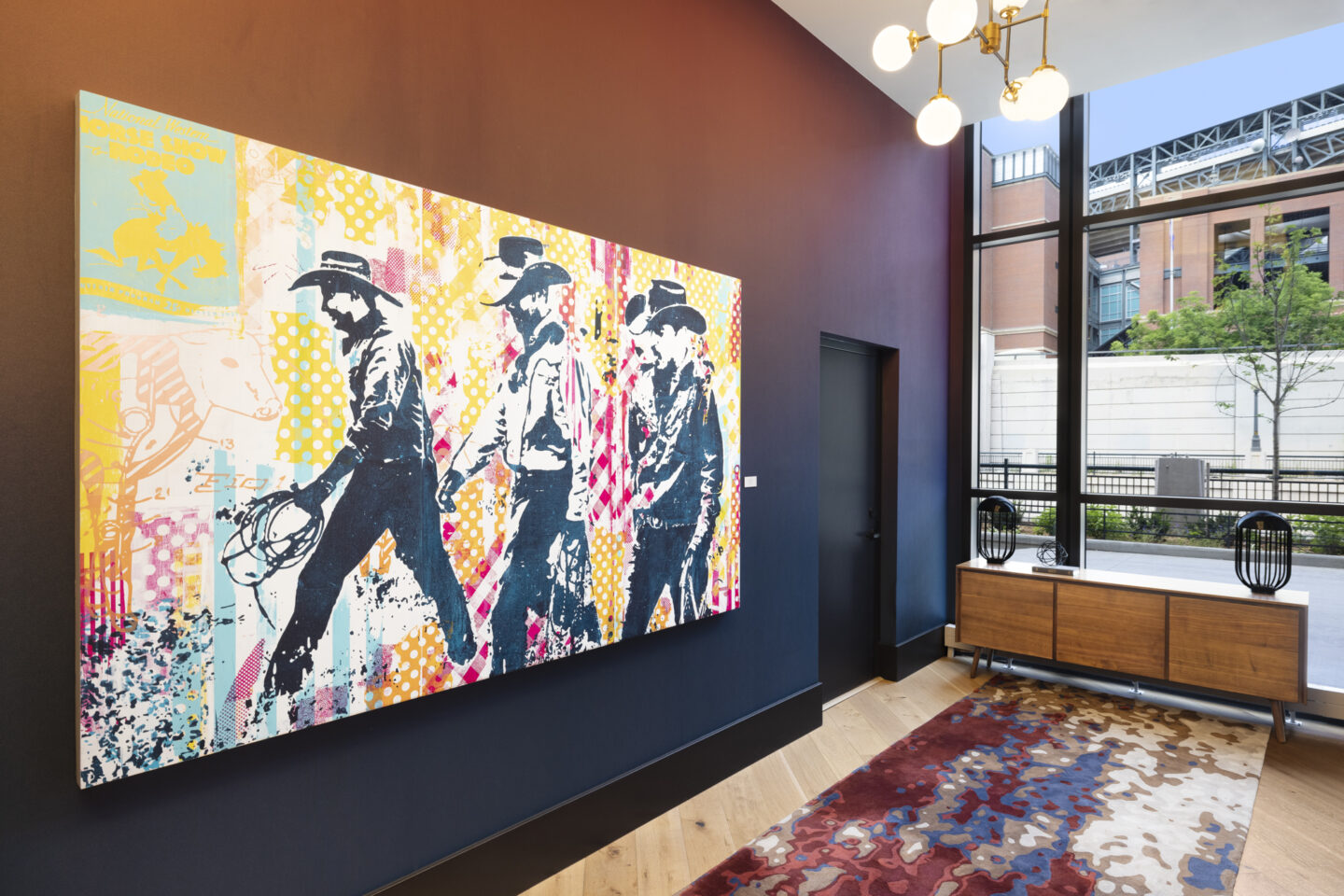
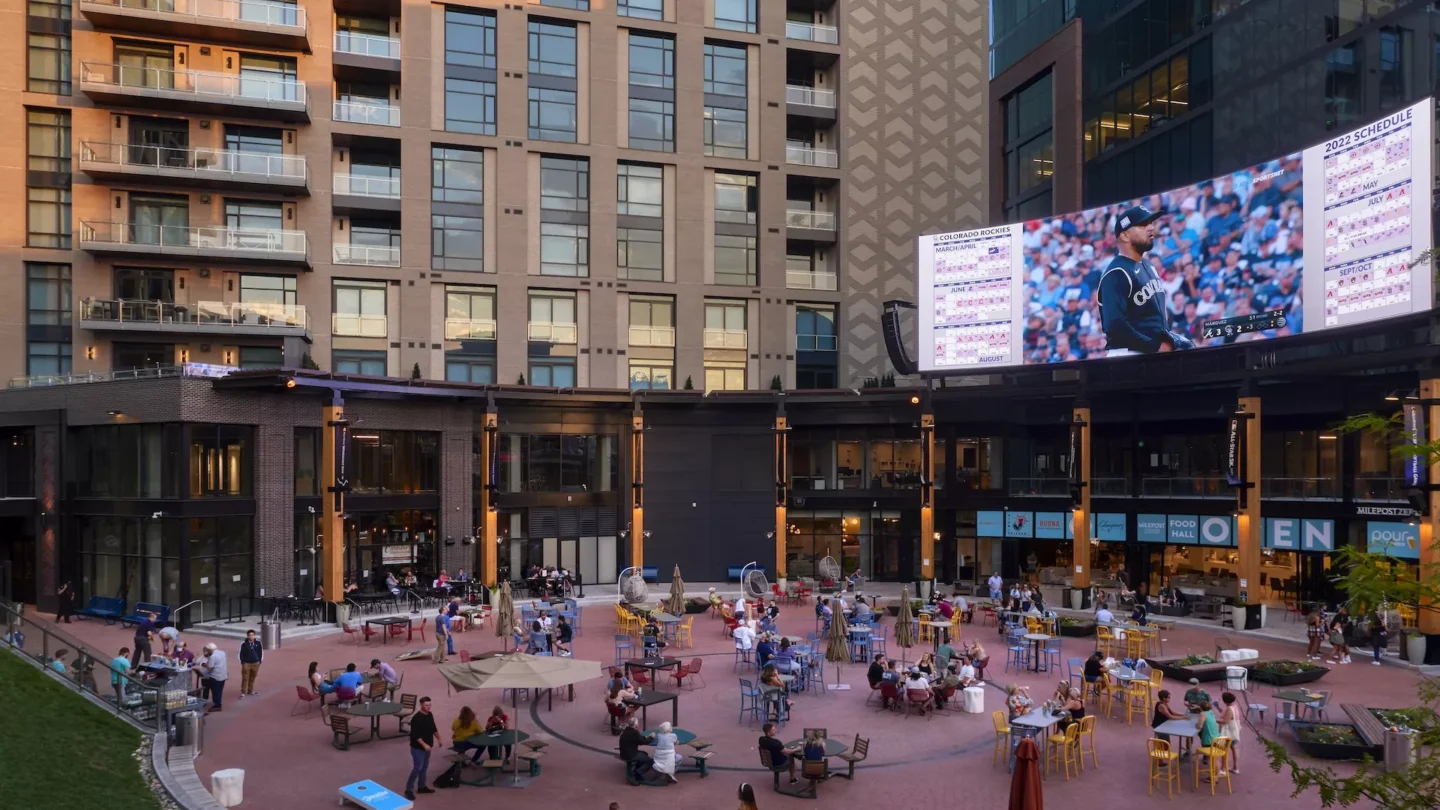
At Denver’s McGregor Square, public art enhances a sense of place and community across the 659,000-square-foot complex, which features residential, hospitality, retail, dining, and office spaces, anchored by a 28,000-square-foot outdoor plaza home to cultural events, sports watching parties, and other dynamic entertainment offerings. One of the development’s highlights is the award-winning Rally Hotel, where our team’s custom art collection captures the excitement and evolution of the Mile High City, while honoring its historic roots and the authentic attributes that characterize the Western region.
The collection features two commissioned artworks by A.J. of the local Access Gallery, which aims to provide art experiences and opportunities to people with disabilities. Additionally, Peter Yumi’s interactive sculpture features 36 screen-printed blocks depicting animated scenes of the city, and all of the suites and penthouses feature unique, Colorado-inspired styling. We also partnered with the Colorado Rockies’ archivist to showcase a collection of historic bats, bases, and pennants from the inception of the MLB team, honoring The Rally’s designation at the official hotel of the Colorado Rockies.
Altogether, McGregor Square and The Rally Hotel use art to honor and connect people to the distinct character of Denver and greater Colorado. This art-forward approach offers a premier example of how mixed-use districts can enhance urban living through thoughtfully designed spaces that celebrate local heritage, promote interaction, and drive economic growth.
Looking Forward
As these mixed-use and entertainment districts continue to evolve – especially in anticipation of iconic events like the World Cup and the Olympics – the economic and social benefits of art integration cannot be understated. From strengthening community connections to driving economic growth, public art is critical for creating sought-after destinations and experiences worth remembering.